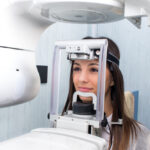The hidden cost of CT scans: The cancer risk your doctor isn’t discussing
 (NaturalHealth365) They seem harmless enough – quick, painless medical scans that let doctors see inside your body without surgery. But a new study just published in JAMA Internal Medicine has uncovered a staggering reality about CT scans that the medical establishment has been downplaying for years: the radiation from a single year’s worth of these common diagnostic tests could trigger over 100,000 future cancer cases.
(NaturalHealth365) They seem harmless enough – quick, painless medical scans that let doctors see inside your body without surgery. But a new study just published in JAMA Internal Medicine has uncovered a staggering reality about CT scans that the medical establishment has been downplaying for years: the radiation from a single year’s worth of these common diagnostic tests could trigger over 100,000 future cancer cases.
While medical professionals often dismiss radiation concerns with vague reassurances, this groundbreaking research provides shocking numbers that should make every patient think twice before agreeing to that “routine” scan.
Consider the consequences: This is a RED ALERT about CT scans
The numbers are far worse than previously thought. In 2023 alone, Americans underwent more than 93 million CT scans – that’s 62 million patients being exposed to powerful ionizing radiation. Using state-of-the-art modeling, researchers from the University of California, San Francisco, now project that approximately 103,000 future cancer cases will develop over these patients’ lifetimes as a direct result.
Dr. Rebecca Smith-Bindman, who led this study across 143 U.S. hospitals and outpatient facilities in 20 states, found that the cancer burden from CT scans is now three to four times higher than previous estimates from 2009. The study analyzed detailed radiation dose data from more than 120,000 actual CT examinations, making it the most comprehensive analysis ever conducted.
The findings are particularly disturbing when broken down by cancer type and patient demographics:
- Lung cancer tops the list with 22,400 projected cases (21,400 in adults, 990 in children)
- Colon cancer follows with 8,700 cases
- Leukemia represents 7,900 cases
- Bladder cancer accounts for 7,100 cases
- Breast cancer in women contributes 5,700 cases
The risk is especially pronounced for children, with girls under one year of age developing cancer at a shocking rate of 20 per 1,000 CT scans – a risk magnitude that should give every parent serious pause.
The hidden culprits: Multiphase scans and unnecessary imaging
What many patients don’t realize is that “one CT scan” often isn’t just one exposure. Nearly 30% of scans are now “multiphase” procedures that deliver multiple rounds of radiation during a single exam, dramatically increasing cancer risk.
The UCSF researchers identified abdomen and pelvis CT scans as the greatest contributors to projected cancers, responsible for 37,500 cases (37% of all projected cancers) despite representing only 32% of all CT scans. These procedures often use multiple scan phases, resulting in substantially higher radiation doses.
Equally concerning is the 30% increase in CT usage since 2007, a growth the researchers attribute partly to the alarming rise in “low-value, potentially unnecessary imaging” – scans that provide little or no medical benefit but still deliver cancer-causing radiation.
The vulnerable: Children and women face greatest risk
While the per-scan cancer risk is highest in children, particularly infants, the vast majority of projected cancers (93,000 cases or 91%) will occur in adults simply because they receive more scans.
The study revealed striking sex differences as well. Women face significantly higher radiation-induced cancer risks than men, especially for lung and thyroid cancers. Even when researchers adjusted their models to be more conservative, lung cancer remained the most common radiation-induced cancer in women.
If current practices continue, the researchers warn that CT-associated cancers could eventually account for 5% of all new cancer diagnoses annually – putting CT scans on par with other major cancer risk factors like alcohol consumption (5.4%) and excess body weight (7.6%).
The medical establishment’s “acceptable risk” fallacy
For decades, medical professionals have downplayed radiation risks by invoking the “benefit outweighs the risk” mantra. But this study challenges that cavalier approach, especially considering that many CT scans are performed when safer alternatives work just as well or when no imaging is needed.
The researchers emphasize that their projections are actually conservative. They excluded CT-guided procedures like biopsies (which use higher doses), didn’t account for the potentially greater damage from CT’s low-energy x-rays compared to other radiation sources, and applied adjustments that assume lower radiation doses are less harmful per unit than higher doses – an assumption increasingly questioned by modern research.
Protecting your health: The Bottom Line
No doubt, CT scans have revolutionized Western medicine, but they are not without risk. If we continue down the current path, CT-induced cancers could soon rival other major, preventable causes of cancer.
We cannot afford to ignore this warning. As patients, we must advocate for thoughtful care. As clinicians, we must uphold the highest standards of safety. And as a society, we must embrace healthier lifestyles – not just to live better, but to reduce our dependence on tools that, when overused, can do more harm than good.
Bottom line: We, at NaturalHealth365, hope that this study will serve as a wake-up call to the value of living a healthy lifestyle.
Editor’s Note: Looking to take control of your health and reduce your risk of ever needing a CT scan in the first place? Discover natural, science-backed strategies to stop the growth of cancer cells before they start. Get lifetime access to the Stop Cancer Docu-Class, featuring 22 world-renowned experts sharing powerful insights on natural healing, nutrition, detoxification, and more. Own the Stop Cancer Docu-Class now and take the first step toward a healthier, cancer-free future.
Sources for this article include:



